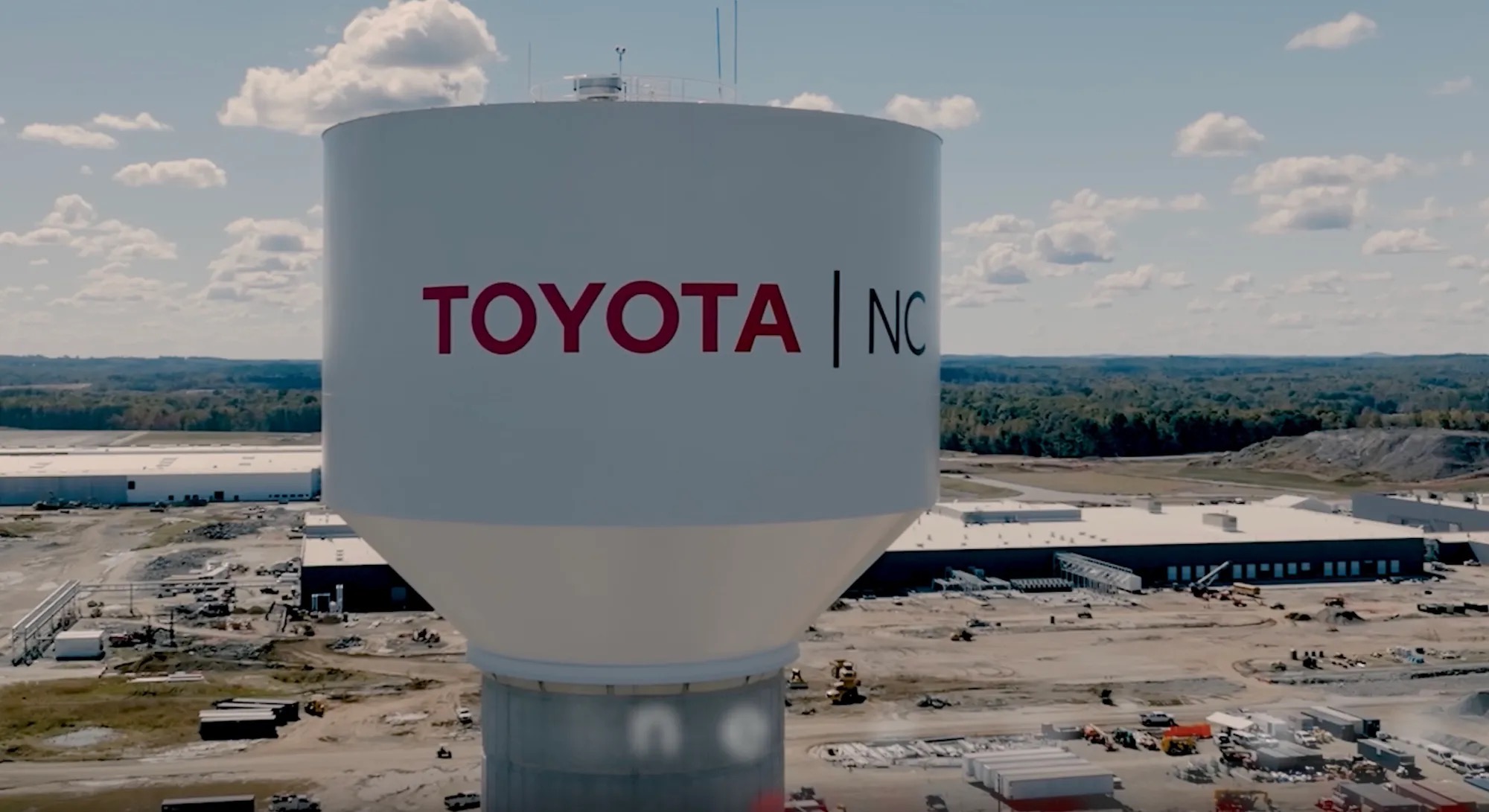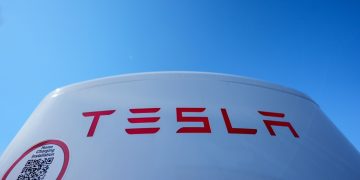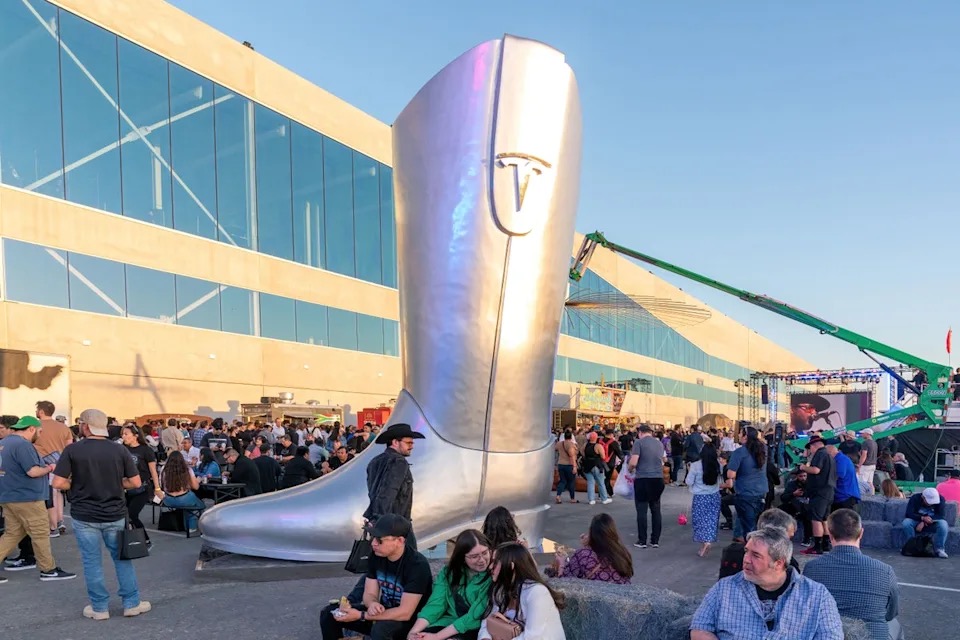Toyota Motor Corporation has officially opened its first U.S. battery manufacturing plant in Liberty, North Carolina, marking one of the most significant industrial investments in the company’s American history. The automaker confirmed a massive $10 billion investment plan to expand its U.S. operations, highlighting its commitment to advancing vehicle electrification and strengthening domestic production.
The sprawling new facility, situated on an 1,850-acre site, represents Toyota’s largest single investment in its nearly 70 years of U.S. manufacturing. The plant will focus on producing advanced lithium-ion batteries for hybrid, plug-in hybrid, and fully electric vehicles. Once fully operational, the site will have the capacity to produce up to 30 gigawatt-hours (GWh) of battery energy annually—enough to power hundreds of thousands of electrified vehicles each year.
Toyota officials described the opening as a pivotal step in the company’s global electrification strategy. While many automakers have pursued a rapid transition toward fully electric vehicles, Toyota has maintained a more diversified approach, emphasizing hybrid and plug-in hybrid technology alongside full EV development. This new facility embodies that “multi-pathway” philosophy, designed to support a wide range of electrified models rather than focusing exclusively on battery-electric cars.

A Landmark Investment
The Liberty plant is expected to create approximately 5,000 new jobs, providing a major economic boost to central North Carolina and surrounding regions. The site’s design includes 14 production lines, each dedicated to a different stage of battery assembly, from cell manufacturing to module integration and final pack assembly. Toyota executives say the facility is built with flexibility in mind, allowing it to adapt to new chemistries and technologies as battery science continues to evolve.
The $10 billion investment plan goes beyond the Liberty site itself. Toyota confirmed that the funds will also support new research partnerships, workforce training programs, and supply chain development across several U.S. states. The automaker’s total investment in the United States will rise to roughly $60 billion once the new spending is completed, solidifying its role as one of the nation’s largest auto manufacturers and employers.
Company leaders emphasized that this investment is both an industrial and strategic move. As global supply chains face ongoing challenges and geopolitical tensions affect access to key materials, Toyota aims to localize more of its production footprint. By building batteries domestically, the company can reduce dependency on overseas suppliers, lower shipping costs, and respond more quickly to shifts in consumer demand.
Boosting Local and National Economies
For North Carolina, Toyota’s decision represents a major economic milestone. The state has worked for years to attract high-tech manufacturing and clean-energy investments, offering infrastructure support and workforce incentives to position itself as a hub for electric mobility. State and local officials welcomed Toyota’s announcement as a sign that the region is ready to play a leading role in the future of American manufacturing.
Economic experts project that the plant could generate billions of dollars in secondary economic activity, from construction contracts and supplier growth to housing and retail development. The 5,000 direct jobs at Toyota’s facility are expected to be complemented by thousands more across local suppliers, logistics providers, and service industries.
Toyota’s new plant also supports the Biden administration’s broader goals of building a robust domestic battery supply chain. Federal officials have pushed automakers to invest in U.S.-based battery production as part of a national effort to reduce carbon emissions and strengthen energy security. Toyota’s investment aligns closely with those policy objectives while also reflecting its own long-term vision of a carbon-neutral future.
A “Multi-Pathway” Vision
Toyota’s approach to electrification remains distinct in the global automotive industry. While rivals such as Tesla and General Motors have made bold all-electric commitments, Toyota continues to champion a “multi-pathway” strategy that incorporates hybrids, plug-in hybrids, fuel-cell vehicles, and full EVs. The company believes that offering a diverse portfolio of technologies allows it to serve a broader range of consumers, markets, and infrastructure conditions.
The Liberty plant will initially produce batteries for several of Toyota’s popular hybrid models, including the RAV4 Hybrid, Corolla Cross Hybrid, and the new Camry Hybrid. Over time, the facility is expected to begin manufacturing battery packs for a new generation of fully electric Toyota and Lexus vehicles, including a three-row SUV designed for the North American market.
Toyota executives argue that hybrids continue to play a critical role in the global transition to clean mobility. By improving fuel efficiency and reducing emissions at scale, hybrid technology can deliver environmental benefits even in regions where charging infrastructure is still limited. The company’s latest generation of hybrid batteries is smaller, lighter, and capable of faster charging than previous designs—key factors that will enhance both performance and affordability.
Looking Ahead
Toyota’s new plant is more than a factory—it’s a statement about the company’s vision for the future. It signals a belief that the path to electrification does not have to follow a single route and that industrial progress can go hand in hand with regional economic growth.
In the coming years, Toyota plans to expand its U.S. operations even further, potentially adding new production lines and integrating next-generation battery technologies, including solid-state batteries. Engineers at the Liberty site will collaborate with Toyota’s research teams in Japan and the United States to refine these innovations for mass production.
The automaker also intends to make sustainability a core part of its manufacturing operations. The Liberty facility has been designed with extensive environmental safeguards, including renewable energy systems, water recycling programs, and waste reduction targets. Toyota aims to make the site carbon neutral by the end of the decade.
As the first batteries roll off the production line, Toyota’s move represents both a milestone for American manufacturing and a strategic evolution for one of the world’s most influential automakers. With its $10 billion investment, Toyota is not just building batteries—it is powering a vision of cleaner, more resilient transportation for decades to come.













